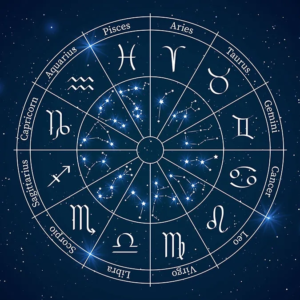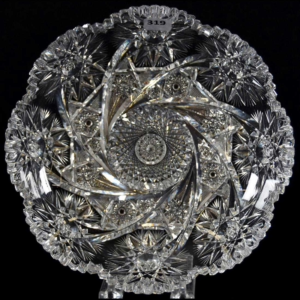mica – properties, virtues & benefits
Mica stone is a common mineral composed of fine, shiny sheets that are easily detached. It is used in many industrial applications and is also valued for its decorative properties in jewelry and interior decoration. Discover its characteristics, uses and varieties in our comprehensive guide to mica stone.
MICA CHARACTERISTICS
- Chakra: Third eye (Ajna), Crown (Sahasrara).
- Properties: Reflection, intuition, sPirituality, emotional healing, mental clarity.
- Astrology: Mercury.
- Zodiac: Gemini, Virgo, Libra, ScorPio.
- Elements: Earth and fire.
- Colors: Colorless, white, silver, brown, yellow, green.
- Hardness: 2.5 – 3 on the Mohs scale.
- Chemical Formula: Generally a complex silicate with potassium, sodium, aluminum, iron, magnesium and/or lithium (e.g., KAl2(AlSi3O10)(OH)2).
- Associated god: None.
MICA – HIS STORY
THROUGH THE PRISM OF MUSCOVITY
Muscovite is a type of mica very common in nature. It was first described by mineralogist James Wight Dana in 1850. The stone is composed mainly of potassium and aluminum. It takes its name from its use in Russia, where it replaced glass in certain applications, hence the term “Moscow glass”. Muscovite was used for furnace windows, lanterns in Siberia and portholes on Russian Navy ships, as it was stronger and more aesthetically pleasing than glass.
Muscovite has also been used in other cultures and eras of history. For example, pre-Columbian civilizations used the stone to make decorative objects because of its reflective appearance. The Hopewells, an Amerindian civilization of the 2nd century BC, made cosmetic objects from Micas stones, including the famous Hopewell hand. These objects were intended to protect their wearers from evil sPirits, even in death. The wealthiest were buried with numerous figures carved from Mica stone as an offering to the gods. It’s even said that a layer of Mica was placed under the slabs of the Teotihuacan pyramid in Mexico.
There are several other types of micas, such as Paragonite, which contains sodium and is derived from Muscovite, LePidolite, which takes its name from its scale-like structure, PhlogoPite or Micamagnesium, which is named for the stone’s hue, Biotite or LePidomelane, which is a black mica rich in iron, and Zinnwaldite, which contains iron and lithium.
Nowadays, micas are mainly used in high-tech equipment exposed to very high temperatures, such as rockets, missiles or telecommunications satellites.
LE MICA : ORIGINE DE LA VIE
An interesting discovery about mica stones was made by Helen Hansma, an academic at the University of Santa Barbara in California. She noticed amazing similarities between this family of stones and our cells, such as the half-nanometer distance between the phosphate grouPings of RNA molecules and the stones’ negative charges. Stone sheets also have a similar concentration of these elements.
It is suggested that the first living cells could have formed in a film of water trapped between several sheets of mica stone because of the Earth’s day-night cycle, which provided enough energy to break up and reconstitute organic molecules on their surface, such as RNA and cell membranes. However, results obtained with today’s elements are inconclusive. Experiments are currently underway to study this hypothesis under conditions approaching those of primitive oceans. To find out more, we recommend reading “Life between the sheets hypothesis”.
MICA STONE – ITS ORIGIN AND COMPOSITION
HIS ORIGINS
Mica stones are a family of naturally occurring minerals that belong to the phyllosilicate group, a subgroup of the silicates, mainly composed of aluminum and potassium. There are two types of micas, white and black, which are found in eruptive and metamorphic rocks, while sedimentary rocks cause them to fuse with too much debris. Muscovite, one of the best-known types, is found in granite, pegmatite and metamorphic rocks. India is the leading producer of Muscovite, closely followed by Brazil, where Biotite is also found. However, fine deposits can be found in Europe, such as Île de Groix in France, Val d’Aoste in Italy and Sweden.
.
There are also other types of micas, such as Paragonite, found in metamorphic schists; PhlogoPite, found in Russia, Madagascar and Tanzania, in dolomites and metamorphic rocks; and Zinnwaldite, found mainly in Germany and the Czech Republic.
Etymologically, the Latin word “micare” (to shine, sparkle) seems to be the most likely hypothesis. There is also a hypothesis linked to the Latin word “mica” itself, which means “crumb” and is related to the stone’s properties. Micas are also known as “cat’s gold” due to their substitution for gold powder.
It’s worth noting that micas, along with feldspar and quartz, are constituents of granite.
HIS COMPOSITION
Mica stones belong to the phyllosilicate family, which gives them a flaky structure and the presence of large, shiny, translucent flakes with hexagonal outlines. These flakes are often perpendicular to the cleavage plane of the stone, making it easy to separate the mineral with a knife or needle, provided the stone is large enough, such as muscovite crystals, which can reach up to 5 meters. Micas stones also have a metallic luster and high resistance to heat.
There are two types of micas: di-octahedral white and tri-octahedral black. Whites are silicates rich in aluminum and potassium, such as muscovite, which is colorless but can turn brown with golden highlights when altered. Blacks contain magnesium, potassium and iron, such as biotite, which is often black Pigment. The chemical compositions of the two types of micas are different, divided between X and Y3+ cations for the white ones, and between X and Y2+3 cations for the black ones.
USE OF MICA
Industrialization of stone
Mica stones have exceptional thermal and electrical insulation properties, making them an interesting material for building construction. To achieve this, the stone is first pulped in water, then this pulp is converted into mica paper using a specialized paper machine. The mica paper, which is previously laid out in reels, is then continuously unwound and impregnated with organic resins or silicones, and sometimes laminated to a fiberglass backing or synthetic polymer sheet, depending on the end use.
.
These coils are then cut into sheets to form more or less flexible plates, which are stacked and pressed. They can also be transformed into ribbon chains by cutting them lengthwise, depending on the material’s end use. All in all, mica paper is a versatile material that can be used for thermal and electrical insulation in a variety of construction applications.
Application after processing.
Synthetic tape warps produced from mica paper are mainly used as thermal and electrical insulators in situations where safety is paramount, such as tunnels, ships, airports, NGOs and supply routes. Indeed, in the event of an incident such as a fire, these insulators keep installations running longer. They are also used to insulate copper bars in high-voltage motors or alternators.
Plates produced from mica paper are used to insulate electronic components from their heat sinks. They are applied in major appliances such as induction furnaces and are also used in our electronic and household appliances around the world. All in all, the thermal and electrical insulating properties of micas stones make them an essential material for many industrial and electronic applications.

MICA STONE – VERTIES AND PROPERTIES
The main elements of mica stones
Lithium is an essential trace element for the human body, as it helps restore bodily balance. It has soothing properties that help calm the mind, reducing anxiety and irritability, which can have a significant impact on sleep quality. Its name comes from the Greek word “lithos”, meaning “stone”, as it was discovered in mineral masses, unlike most other elements which come from plant matter.
Potassium, meanwhile, acts directly on the body by soothing aches and pains, filling weaknesses and reducing muscle tension caused by stress. In short, both elements are important for the health and well-being of the human body.
PRATICAL USES
LePidolites and muscovites are effective for soothing body and mind thanks to their composition including potassium, which gives them muscovite properties. LePidolite, which also contains lithium, can be ground into powder and used to treat chronic depression by regulating stress and sleep problems, particularly in children.
The occult properties of muscovite and lePidolite are less well known, but just as impressive. Clairvoyants use muscovite to protect the aura of targeted individuals against malicious attacks of all kinds, offering them strong psychic protection. LePidolite possesses great positive sPiritual energy which, when used correctly, can calm the mind and reduce the effects of strong emotions caused by problems, particularly in young children. Both stones, with their mirror-like reflective surface, can also be useful in divination for those who know how to use them.

MICA STONE – CLEAN AND RECHARGE
Mica stone can be cleaned and recharged in a number of ways. Here are some common methods:
Cleaning:
- Distilled water: Rinse stone with distilled water and dry thoroughly with a soft cloth.
- Encens: Pass the stone through incense smoke, this will purify the stone while creating a pleasant atmosphere.
- Earth: Bury the stone in the ground for 24 hours to discharge its negative energies.
Loading:
- Solar light: Expose the stone to direct sunlight for a few hours to recharge it with solar energy.
- Moon light: expose the stone to the light of the full moon for a whole night to recharge it with lunar energy.
- Quartz clusters: place the stone on a quartz cluster or quartz geode to recharge it with energy.
- Intention: hold the stone in your hands and visualize it filling with positive energy and light.
WHERE DOES THE NAME MICA COME FROM?
The name “mica” comes from the Latin “micare” meaning “to shine” or “to sparkle”. The name was given in reference to the metallic, shiny sheen of this mineral’s thin sheets. Mica is a silicate mineral in the form of thin, flat sheets. It is widely distributed in the earth’s crust and is used in many industrial and decorative applications due to its unique physical and chemical properties. Mica also has sPiritual significance in some cultures, where it is associated with mental clarity, reflection and wisdom.
WHICH CHAKRA DOES MICA ACT ON?
Mica acts primarily on two chakras: the third eye chakra (or Ajna) and the crown chakra (or Sahasrara). The third eye chakra is located between the eyebrows and is associated with intuition, mental clarity and extrasensory perception. The crown chakra is located at the top of the head and is associated with sPirituality, wisdom and connection to the universe. Mica can help stimulate and balance these two chakras, promoting reflection, intuition, mental clarity and sPirituality.
WHICH ASTROLOGICAL SIGN IS ASSOCIATED WITH MICA?
Mica stone is associated with several astrological signs due to its different properties and colors. Gemini, Virgo, Libra and ScorPio are the astrological signs most often associated with mica. Gemini can benefit from mica because of its calming effect on the mind and its balancing properties. Virgos can benefit from mica because of its emotional healing properties and its ability to promote mental clarity. Librans can benefit from mica because of its balancing effect on the emotions and its ability to promote communication and understanding. ScorPios can benefit from mica due to its protective effect and ability to enhance intuition.
MICA STONE SUMMARY
Mica stone, also known as mica, is a common mineral that appears as flat, shiny sheets. Mica is mainly composed of aluminum, potassium, magnesium, iron and lithium silicates.
It is often used in industry due to its insulating, heat- and chemical-resistant properties. It is also found in many everyday consumer products such as cosmetics, paints and floor coverings.
Mica also has cultural and sPiritual significance in some indigenous cultures, who use it for ceremonies and rituals. However, mica mining can often be associated with illegal and dangerous mining practices, as well as human rights abuses in producing countries.
In short, mica is a versatile mineral used in industry and everyday life, but it can also be associated with controversial mining practices.

